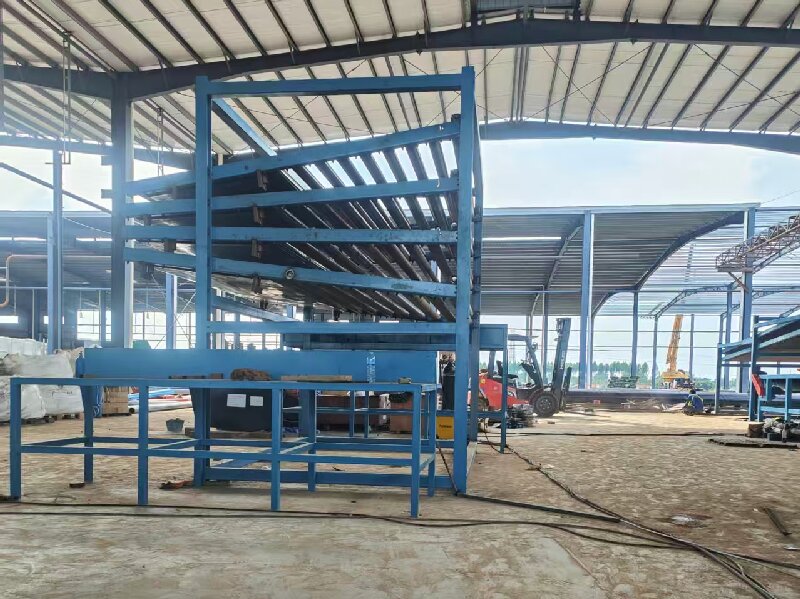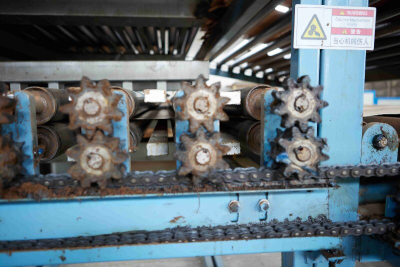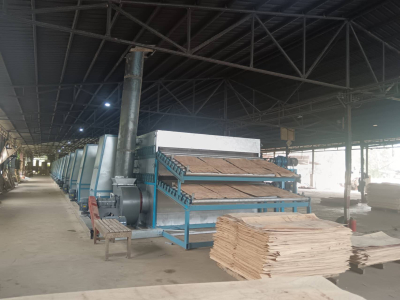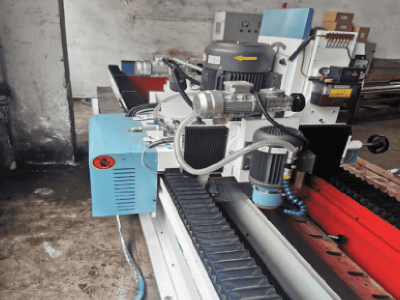Shine Revolutionizes Veneer Drying with Fully Automated, AI-Powered Drying Systems
ShanDong, China – In the highly specialized and demanding world of wood processing, the drying of veneer has long been a critical, yet notoriously challenging, bottleneck. The delicate nature of thin wood sheets, coupled with the imperative to achieve precise, uniform moisture content, has traditionally required significant manual labor, experienced operators, and often resulted in inconsistent quality and substantial material waste. Today, that paradigm is being decisively shattered. Shine Woodworking Machinery Co., Ltd., a leading innovator in the field, has launched its next-generation Veneer Drying Machine. This technological tour de force sets a new global benchmark for automation, precision, and quality assurance in the veneer production industry.
This isn't merely an incremental upgrade; it's a holistic re-engineering of the drying process from the ground up. By integrating a fully automated conveyor and handling system with a groundbreaking visual moisture detection technology, the Shine veneer dryer delivers unprecedented levels of efficiency, consistency, and data-driven control, guaranteeing that every batch of veneer emerges perfectly dried, with optimal physical properties and strictly compliant moisture levels.
The Veneer Drying Conundrum: A Delicate Balancing Act
To fully appreciate the magnitude of Shine's innovation, one must first understand the high-stakes science of veneer drying. Veneer, often sliced to thicknesses of less than a millimeter, is an extremely hygroscopic and unstable material. The primary goal of drying is to reduce the moisture content from a green state of 30-100% down to a target range, typically between 6% and 12%, depending on the wood species and its final application.
The challenges are multifaceted:
Preventing Case-Hardening: If the surface dries too quickly, it can seal the interior moisture, creating internal stresses that lead to warping, cracking, or checking once the veneer is machined.
Achieving Uniformity: Inconsistent drying across a sheet or between sheets in the same batch leads to variable strength and gluing properties, compromising the integrity of the final plywood or laminated product.
Preserving Color and Quality: Excessive heat or improper humidity control can degrade the natural color of the wood, causing darkening or discoloration, which is a critical defect for aesthetic applications.
Minimizing Energy Consumption: Traditional dryers are energy-intensive. Inefficient processes lead to exorbitant operational costs and a larger carbon footprint.
Traditional drying systems, often reliant on manual loading (infeed) and unloading (outfeed), compound these technical challenges. Human operators cannot maintain a perfectly consistent pace, leading to bottlenecks or underutilization of the dryer's capacity. Manual handling also increases the risk of physical damage to the delicate veneer sheets. Furthermore, manual moisture sampling is inherently flawed—it is sporadic, slow, and only checks a tiny fraction of the total production, allowing substandard veneer to proceed downstream, causing problems in subsequent manufacturing stages.
The Shine Solution: A Symphony of Automation and Intelligence
Shine's engineers have addressed these challenges not as isolated issues, but as an interconnected system. Their solution is a seamlessly integrated production cell where mechanical precision meets digital intelligence.
1. The Heart of Automation: Robotic Infeed and Outfeed Systems
The first thing that strikes an observer of the Shine line is its relentless, rhythmic automation. The process begins at the infeed end.
Automatic Infeed System: A sophisticated robotic or conveyor-based system takes over from the peeling or slicing line. It gently but firmly picks up individual or stacked green veneer sheets, orienting them correctly and feeding them into the dryer at a precisely controlled, optimal speed. This system is equipped with sensors to detect sheet size and alignment, making automatic adjustments to handle different formats without manual intervention. The benefits are immediate and profound:
Elimination of Bottlenecks: A continuous, non-stop flow of veneer into the dryer maximizes machine utilization and overall line throughput.
Zero Physical Damage: Robotic handlers are programmed for gentle contact, drastically reducing the tears, breaks, and surface marks common with manual forklifts or human handling.
Labor Optimization: It frees up skilled workers from repetitive, physically demanding tasks, allowing them to focus on supervision, maintenance, and quality control oversight.
Automatic Outfeed and Stacking System: As the veneer completes its journey through the drying chamber, it is not simply ejected. An equally sophisticated outfeed system receives the dried sheets. Using vacuum cups or precise grippers, it carefully stacks the veneer into neat, uniform piles, ready for the next processing step. This system often integrates with automated palletizers, creating a truly hands-off operation from wet sheet to dry, palletized stack. The consistency in stacking also facilitates automated packaging and logistics downstream.
This end-to-end automation ensures that the human element is elevated from manual labor to system management, enhancing both productivity and workplace safety.
2. The Brain of the Operation: Vision-Based Moisture Detection and AI Control
While the automated handling is impressive, the true genius of the Shine veneer dryer lies in its cognitive core—a proprietary vision-based moisture detection system. This technology represents a quantum leap beyond traditional pin-type moisture meters.
How It Works:
Mounted at critical points—typically immediately after the dryer—are high-resolution, multi-spectral or hyperspectral imaging cameras. These are not standard optical cameras; they are calibrated to capture data from specific wavelengths in the electromagnetic spectrum, particularly in the near-infrared (NIR) range.
Water molecules absorb light at unique and specific frequencies. The system's cameras actively scan every square inch of every veneer sheet as it exits the dryer. By analyzing the absorption and reflection of the NIR light, the system's integrated software algorithms can instantaneously and accurately calculate the moisture content across the entire surface of the veneer.
The Power of Full-Area Mapping:
Unlike a pin meter that gives a single-point reading, this visual system creates a detailed, high-resolution "moisture map" of each sheet. This map is visually represented on the operator's Human-Machine Interface (HMI) screen, often using a color gradient (e.g., blue for dry, red for wet). This allows for immediate and intuitive assessment.
The implications are revolutionary:
100% Inspection, Zero Delay: Every single sheet is inspected. There is no sampling error. Defects are caught in real-time, not hours later in the warehouse.
Detection of Localized Defects: The system can identify small, wet spots or dry patches that a random pin test would almost certainly miss. This is crucial because a single wet spot can cause a blister in the plywood during hot pressing, ruining an entire panel.
Closed-Loop Process Control: This is where the system transitions from a passive inspector to an active process manager. The real-time moisture data is fed back directly into the dryer's control system. If the system detects that the veneer is trending too dry, it can automatically instruct the dryer to reduce heat or increase humidity. Conversely, if the output is too wet, it can ramp up the drying intensity. This creates a self-optimizing, closed-loop system that constantly fine-tunes itself for perfect results.
Predictive Analytics and Data Logging: The system logs all moisture data, correlating it with wood species, initial moisture, and dryer settings. Over time, this massive dataset allows the AI to predict optimal drying parameters for new batches, continuously improving efficiency and reducing the need for operator guesswork.
Tangible Benefits: Transforming Business Outcomes
The integration of high automation and intelligent vision inspection translates directly into powerful competitive advantages for veneer manufacturers.
Unprecedented and Guaranteed Quality: The primary benefit is the absolute consistency of the final product. Manufacturers can confidently promise their customers veneer with a guaranteed, uniform moisture content. This results in stronger, more reliable plywood, reduced glue consumption (as glue spreads more evenly on a consistent substrate), and a superior final product with minimal rejection rates.
Dramatic Reduction in Waste: By eliminating over-drying (which makes veneer brittle) and under-drying (which causes spoilage and pressing defects), the system drastically reduces material waste. Catching defective sheets in real-time prevents them from contaminating good batches downstream. This waste reduction has a direct and significant positive impact on both profitability and sustainability.
Maximized Throughput and Operational Efficiency: The automated handling system ensures the dryer operates at its designed capacity 24/7, without pauses for shift changes or breaks. The optimized drying cycles, controlled by the AI, often lead to faster drying times without compromising quality, squeezing more production out of the same footprint.
Lower Total Cost of Ownership (TCO): While the initial investment is substantial, the TCO is favorably impacted by several factors: reduced labor costs, lower energy consumption (through optimized cycles), massive savings from reduced waste, and minimized downtime due to the system's reliability and predictive maintenance capabilities.
Data-Driven Decision Making: Manufacturers are no longer operating on intuition. They have access to a wealth of production data—drying rates for different species, energy consumption per batch, quality yield percentages—enabling strategic business decisions for sourcing, pricing, and process improvement.
A Glimpse into the Future: The Smart Factory
The Shine Veneer Drying Machine is more than just a piece of equipment; it is a foundational node in the emerging "smart factory" for the wood industry. With its Industry 4.0-ready architecture, it can be integrated into a wider Manufacturing Execution System (MES). Production orders can be sent directly to the dryer, which automatically adjusts its settings for the required wood species and target moisture content. The quality data from each batch can be tagged and traced back to the final product, providing full traceability for customers.
Conclusion: Setting a New Global Standard
In an industry where margins are tight and quality is paramount, the introduction of Shine's fully automated, vision-equipped dryer is a watershed moment. It successfully addresses the most persistent pain points of veneer production—inconsistency, waste, and high operational costs—with a robust, intelligent, and efficient solution.
By marrying flawless mechanical automation with the perceptive power of visual moisture detection and AI, Shine is not just selling a machine; it is offering a guarantee of quality, a blueprint for efficiency, and a clear path toward the future of automated, data-driven wood manufacturing. For forward-thinking veneer producers looking to gain a decisive edge in the global market, the question is no longer if they should automate, but which partner can deliver this level of integrated intelligence. With this groundbreaking technology, Shine has firmly positioned itself as the answer.







